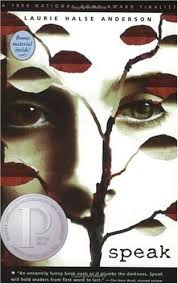Gospel outlines
Gospel outlines have never featured prominently in my witness. When I was a teenager, during the rare times I dared to lift my head out of the rabbit hole and timidly venture to share my faith with a friend, I would more likely appeal to my testimony, which was nothing earth-shaking, perhaps throwing in a bit of pop apologetics - C.S Lewis's famous triad of whether Jesus was a liar, lunatic or legend comes to mind here - along the way. Or just as likely, I would appeal to some combination of felt-needs: how God was the only one who could fill the hole in our lives, God fulfilling our identity and so on. This is of course true on many levels, but that isn't quite the gospel, only the outworkings of it.
I do vaguely recall having in my possession a gospel tract on my bedroom bookshelf, complete with the classic illustration of a chasm between God and man and Jesus as the bridge. I'm pretty sure it wasn't the Four Spiritual Laws, but it was similar. That would also have been pretty close to the gospel I grew up with. Now, in recent years there's been plenty of discussion about what really constitutes the good news of Christianity, and gospel presentations such as the Four Spiritual Laws have been critiqued as being too individualistic or reductionistic, with the gospel essentially being boiled down to a fire escape. So I was quite interested to see James Choung, who works for InterVarsity Fellowship in the USA, develop this new model. (HT: Al Hsu) James is attempting to present a more holistic vision of the gospel that tries to capture the corporate dimensions of the gospel as well. He's also written a companion book, True Story, which will be released later this year. Judging from the blurb, the book will present the gospel narrative in more detail for both believer and unbeliever alike. Here's the Youtube video of his outline:
I'm struck by how similar his basic outline follows N.T Wright in Simply Christian, beginning as it does with a broken world where we all thirst for something better. I suspect that Wright must be one of his primary influences. There's a lot to like about his outline - I especially like the threefold emphasis on God, each other, and the world, which I think is very biblical; it's right there in Genesis! And so he helpfully shows firstly how attractive the original world as conceived by God was, and how sin ("we decided that we were going to run the whole show...") has affected everything, not just our relationship with God, but with each other and the world.
But I'm not quite sold. I think that if previous gospel outlines were too individualistic, this goes too far the other way. It was actually oddly depersonalising. In his 'sin circle', he talks about "damage" a lot. I wonder if that's too docile a word. In fact, I think it is quite reductionistic in one sense. It's definitely true that alienation from each other and from God is an effect of sin. Sin also enslaves us and makes us feel dirty. The way he presents it though downplayed our role in allowing such evil to flourish. Amongst other things, sin is personal and tells of our guilt before God. When he said "we're damaged by evil", it sounded as if evil was an external oppresive force which we had little to do with.
His diagnosis of the problem consequently shaped his presentation of salvation, where he talked about how through Jesus, "all this crap [in our sinful world]" died with him and that we can "be healed in Jesus name". Again, I wonder if the language used is too mild, and that it could possibly lead to misunderstandings in our therapeutic culture. I don't think I was too clear either on why Jesus had to die. In explaining the disconnect between the sinful world we see now and the restored world envisioned by Christians, he says that the problems are overwhelming and that's why we need "Jesus' resources". Now I'm very wary of what I'm going to say next, because I can see why he presented it as such, as it circumvents "cheap grace" and promotes a much more activist (missional?) mindset, but it almost felt as if he had turned the gospel into a Christianised Malaysia Boleh! chant (for my non-Malaysian readers, this is basically a motivational slogan used by the government in the "Anything is possible!" spirit). Grace seemed to have gotten lost in the shuffle.
Again I hasten to add that there's a lot I like about the gospel outline. And I guess in the end, no matter what, all outlines tend to be reductionistic in one way or another, that's why they're called outlines! Plus he only had 3 minutes, and I suppose James will expand his material further in his book. Depending on the context, it might be appropriate to utilise such an outline. The tension comes down to which motif of the atonement we wish to employ as our dominant theme. Here, the emphasis is more on the victorious reign of God, whereas more individualistic outlines focus on the substitutionary death of Jesus. It would be really nice to find some way of complementing the two (or more!), since both are inextricably linked to each other.
I've only skimmed through it, but so far it seems as if the best resource that holds the two together is The World We All Want, developed by Tim Chester and Steve Timmis. It's more of an evangelistic course along the lines of Alpha or Christianity Explored. In conservative evangelical circles here, the outline that is the most popular is Two Ways to Live. The helpful thing about presenting God as King/Ruler and humans who rule/steward the world under him, as twtl does, is that it maintains the corporate dimension, although as the outline goes on, it does tend to shift to a more individualistic tone.
For me, although I very seldom use gospel outlines, I do often find them helpful by picturing them in my head as it helps me think about some of the key themes I should mention if I do get an opportunity to share the gospel. They can be of use too to those who don't share the same mother tongue as us or those who might find wordy explainations a barrier and will benefit from a visual aid. And maybe it's a good thing that the gospel is irreducible to an outline after all, as it keeps us humble and reminds us of the depth of the riches of Jesus' life, death and resurrection!
† Expand post
I do vaguely recall having in my possession a gospel tract on my bedroom bookshelf, complete with the classic illustration of a chasm between God and man and Jesus as the bridge. I'm pretty sure it wasn't the Four Spiritual Laws, but it was similar. That would also have been pretty close to the gospel I grew up with. Now, in recent years there's been plenty of discussion about what really constitutes the good news of Christianity, and gospel presentations such as the Four Spiritual Laws have been critiqued as being too individualistic or reductionistic, with the gospel essentially being boiled down to a fire escape. So I was quite interested to see James Choung, who works for InterVarsity Fellowship in the USA, develop this new model. (HT: Al Hsu) James is attempting to present a more holistic vision of the gospel that tries to capture the corporate dimensions of the gospel as well. He's also written a companion book, True Story, which will be released later this year. Judging from the blurb, the book will present the gospel narrative in more detail for both believer and unbeliever alike. Here's the Youtube video of his outline:
I'm struck by how similar his basic outline follows N.T Wright in Simply Christian, beginning as it does with a broken world where we all thirst for something better. I suspect that Wright must be one of his primary influences. There's a lot to like about his outline - I especially like the threefold emphasis on God, each other, and the world, which I think is very biblical; it's right there in Genesis! And so he helpfully shows firstly how attractive the original world as conceived by God was, and how sin ("we decided that we were going to run the whole show...") has affected everything, not just our relationship with God, but with each other and the world.
But I'm not quite sold. I think that if previous gospel outlines were too individualistic, this goes too far the other way. It was actually oddly depersonalising. In his 'sin circle', he talks about "damage" a lot. I wonder if that's too docile a word. In fact, I think it is quite reductionistic in one sense. It's definitely true that alienation from each other and from God is an effect of sin. Sin also enslaves us and makes us feel dirty. The way he presents it though downplayed our role in allowing such evil to flourish. Amongst other things, sin is personal and tells of our guilt before God. When he said "we're damaged by evil", it sounded as if evil was an external oppresive force which we had little to do with.
His diagnosis of the problem consequently shaped his presentation of salvation, where he talked about how through Jesus, "all this crap [in our sinful world]" died with him and that we can "be healed in Jesus name". Again, I wonder if the language used is too mild, and that it could possibly lead to misunderstandings in our therapeutic culture. I don't think I was too clear either on why Jesus had to die. In explaining the disconnect between the sinful world we see now and the restored world envisioned by Christians, he says that the problems are overwhelming and that's why we need "Jesus' resources". Now I'm very wary of what I'm going to say next, because I can see why he presented it as such, as it circumvents "cheap grace" and promotes a much more activist (missional?) mindset, but it almost felt as if he had turned the gospel into a Christianised Malaysia Boleh! chant (for my non-Malaysian readers, this is basically a motivational slogan used by the government in the "Anything is possible!" spirit). Grace seemed to have gotten lost in the shuffle.
Again I hasten to add that there's a lot I like about the gospel outline. And I guess in the end, no matter what, all outlines tend to be reductionistic in one way or another, that's why they're called outlines! Plus he only had 3 minutes, and I suppose James will expand his material further in his book. Depending on the context, it might be appropriate to utilise such an outline. The tension comes down to which motif of the atonement we wish to employ as our dominant theme. Here, the emphasis is more on the victorious reign of God, whereas more individualistic outlines focus on the substitutionary death of Jesus. It would be really nice to find some way of complementing the two (or more!), since both are inextricably linked to each other.
I've only skimmed through it, but so far it seems as if the best resource that holds the two together is The World We All Want, developed by Tim Chester and Steve Timmis. It's more of an evangelistic course along the lines of Alpha or Christianity Explored. In conservative evangelical circles here, the outline that is the most popular is Two Ways to Live. The helpful thing about presenting God as King/Ruler and humans who rule/steward the world under him, as twtl does, is that it maintains the corporate dimension, although as the outline goes on, it does tend to shift to a more individualistic tone.
For me, although I very seldom use gospel outlines, I do often find them helpful by picturing them in my head as it helps me think about some of the key themes I should mention if I do get an opportunity to share the gospel. They can be of use too to those who don't share the same mother tongue as us or those who might find wordy explainations a barrier and will benefit from a visual aid. And maybe it's a good thing that the gospel is irreducible to an outline after all, as it keeps us humble and reminds us of the depth of the riches of Jesus' life, death and resurrection!
† Expand post












ya while we need to avoid being individualistic, we need to own up that sin is also personal... evil runs thru each of our hearts :)
i'm now very interested in the rabbinic/questioning evanglism of randy newman
indeed! :) Still, hats off to James for attempting to present the gospel afresh; hopefully his book will incorporate the personal aspect.
I've skimmed thru Newman's book, it looks good!
Post a Comment
<< Home